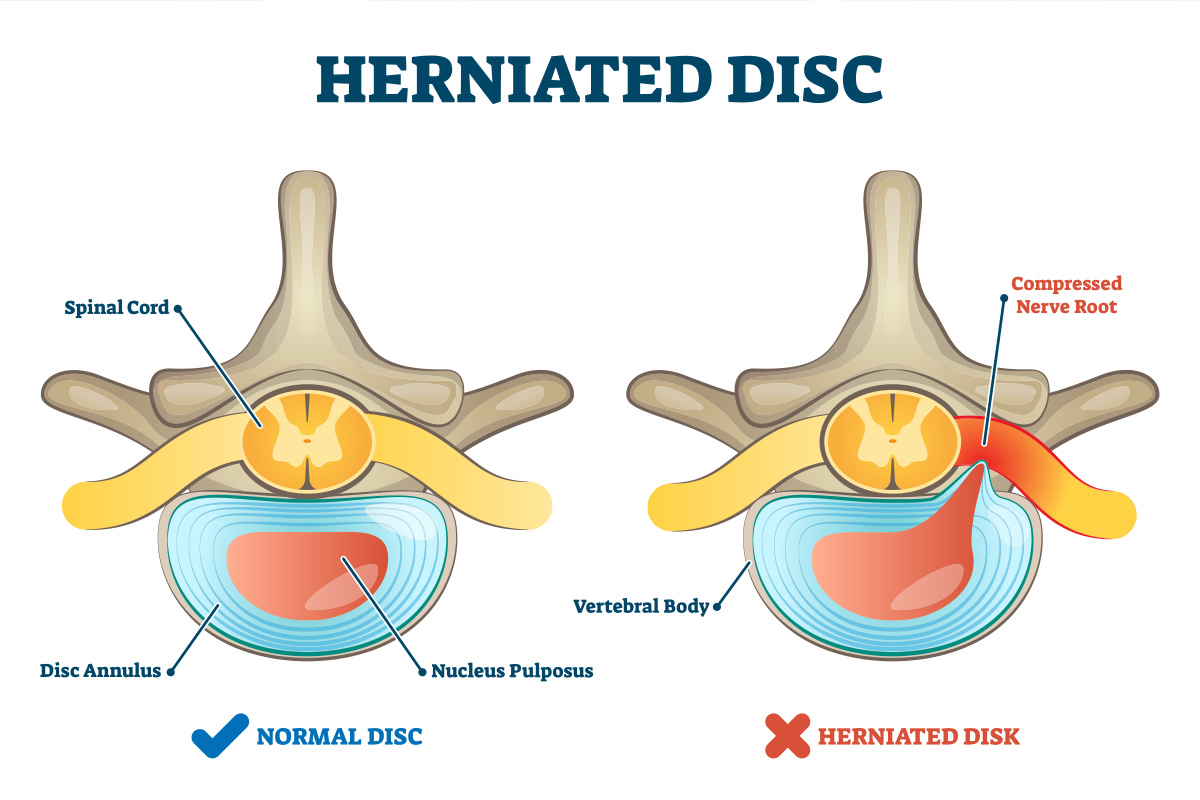 Spinal discs play a crucial role as shock absorbers between the vertebrae. They support the upper body and allow for a wide range of movement in all directions. If a disc herniates, your normal everyday actions can be a painful experience. A cervical herniated disc happens when the inner core of the disc in the neck leaks out of the disc and presses on the adjacent nerve root. Usually apparent in 30-50-year-olds, cervical herniated discs can originate from trauma or neck injuries, while some symptoms can start spontaneously. Pain radiates from the nerve pathway of the arm, causing numbness and tingling, along with pain, down the arm and into the fingertips.
Spinal discs play a crucial role as shock absorbers between the vertebrae. They support the upper body and allow for a wide range of movement in all directions. If a disc herniates, your normal everyday actions can be a painful experience. A cervical herniated disc happens when the inner core of the disc in the neck leaks out of the disc and presses on the adjacent nerve root. Usually apparent in 30-50-year-olds, cervical herniated discs can originate from trauma or neck injuries, while some symptoms can start spontaneously. Pain radiates from the nerve pathway of the arm, causing numbness and tingling, along with pain, down the arm and into the fingertips.
Symptoms of a Cervical Herniated Disc
If you have a herniated disc in your neck, you may feel symptoms in your shoulders, arms, hands, and fingers, as well as your neck. The amount and location of your pain largely depend on the location of the herniated disc. The cervical spine is located at the first seven vertebrae of the spine, numbered C1-C7. The nerve affected by the herniation is the at the bottom of the herniation. For example, a herniation at C5-C6 will have the C6 nerve root affected.
- C4-C5 (C5 nerve root): Shoulder pain and weakness in the deltoid muscle. Does not usually cause numbness or tingling.
- C5-C6 (C6 nerve root): Weakens the biceps and wrist extensor muscles. Numbness and tingling along with pain can radiate to the thumb side of the hand.
- C6-C7 (C7 nerve root): Weakens the triceps and finger extensor muscles. Numbness can radiate down the triceps and into the middle finger.
- C7-T1 (C8 nerve root): Weakness with the handgrip. Numbness, tingling, and pain that radiates down the arm to the pinky finger side of the hand.
These are only typical patterns associated with each level. They are not absolute, meaning arm pain and symptoms will be different depending on the person.
Treatment for a Cervical Herniated Disc
Pain from a cervical herniated disc is caused by the pinching of the nerve root and inflammation associated with the disc itself. A majority of the time, pain from a cervical herniated disc can be controlled with medication. Non-surgical treatments alone are enough to resolve symptoms in most cases. In fact, once arm pain starts to improve, it is unlikely to return.
Treatment options:
- Anti-Inflammatory Medication
- Oral Steroids For Severe Pain
- Physical Therapy And Exercise
- Cervical Traction, Chiropractic Manipulation, Activity Modification
- Osteopathic Medicine
- Bracing
- Cervical Epidural steroid injections
There is no literature that supports the idea that surgery for a cervical disc herniation helps the nerve root heal quicker. In the end, if arm pain gets better, it is best to continue with non-surgical treatment. All treatments are designed to help resolve arm pain. The weakness and numbness will also resolve with time.
When it comes time for you to discuss your treatment options, contact William Capicotto, MD.



